Control of Tire Wear Particulate Matter through Tire Tread Prescription
Abstract
1. Introduction
2. Materials and Methods
2.1. Materials
2.2. Manufacture of Compounds and Vulcanizate
2.2.1. Bound Rubber Content
2.2.2. Crosslink Density
2.2.3. Tan ẟ at 0 °C, 60 °C
2.3. Preparation of Rubber Specimens and Tires
2.4. Specimen Wear Device
2.5. Tire Wear Simulator
2.6. Measurement of PM
3. Results
3.1. Effect of Tread Prescription
3.2. Effect of Wear Conditions
3.3. Tire Wear Simulator Results
3.4. Morphological Comparison of TWP
4. Conclusions
- The TWP generated by tire wear had different concentration distributions depending on the composition of the tire tread.
- The patterns of the TWP artificially generated using the wear-testing device and simulator were very similar.
- When using both types of testing equipment, a bimodal TWP concentration distribution was observed in the NR-only matrix, whereas the PM concentration above PM5.0 decreased and exhibited a unimodal concentration distribution for the alloy of NR and BR.
- Both the TWP concentration and amount of wear decreased for the tire tread mixed with NR and BR.
- The amount of generated PM tends to increase as the tire wear increases.
Author Contributions
Funding
Institutional Review Board Statement
Data Availability Statement
Acknowledgments
Conflicts of Interest
References
- Environmental Protection Agency (EPA) Particulate Matter (PM) Basics. Available online: https://www.epa.gov/pm-pollution/particulate-matter-pm-basics (accessed on 10 June 2023).
- Valavanidis, A.; Fiotakis, K.; Vlachogianni, T. Airborne particulate matter and human health: Toxicological assessment and importance of size and composition of particles for oxidative damage and carcinogenic mechanisms. J. Environ. Sci. Health C Environ. Carcinog. Ecotoxicol. Rev. 2008, 26, 339–362. [Google Scholar] [CrossRef]
- Brook, R.D.; Rajagopalan, S.; Pope, C.A., III.; Brook, J.R.; Bhatnagar, A.; Diez-Roux, A.V.; Holguin, F.; Hong, Y.; Luepker, R.V.; Mittleman, M.A.; et al. Particulate matter air pollution and cardiovascular disease: An update to the scientific statement from the American Heart Association. Circulation 2010, 121, 2331–2378. [Google Scholar] [CrossRef]
- Kumar, P.; Hama, S.; Nogueira, T.; Abbass, R.A.; Brand, V.S.; Andrade, M.F.; Asfaw, A.; Aziz, K.H.; Cao, S.-J.; El-Gendy, A.; et al. In-car particulate matter exposure across ten global cities. Sci. Total Environ. 2021, 750, 141395. [Google Scholar] [CrossRef] [PubMed]
- Ha, J.U.; Ryu, G.C.; Lee, P.-C.; Ko, Y.K.; Jeoung, S.K. Trends in particulate matter generation from truck and bus radial tires using a wear tester. J. Appl. Polym. Sci. 139. 2022, 21, 52190. [Google Scholar] [CrossRef]
- Li, J.; Zhang, M.; Ge, Y.; Wen, Y.; Luo, J.; Yin, D.; Wang, C.; Wang, C. Emission Characteristics of Tyre Wear Particles from Light-Duty Vehicles. Atmosphere 2023, 14, 724. [Google Scholar] [CrossRef]
- Raza, M.; Chen, L.; Leach, F.; Ding, S. A review of particulate number (PN) emissions from gasoline direct injection (GDI) engines and their control techniques. Energies 2018, 11, 1417. [Google Scholar] [CrossRef]
- Yan, R.-H.; Peng, X.; Lin, W.; He, L.-Y.; Wei, F.-H.; Tang, M.-X.; Huang, X.-F. Trends and challenges regarding the source-specific health risk of PM2.5-bound metals in a chinese megacity from 2014 to 2020. Environ. Sci. Technol. 2022, 56, 6996–7005. [Google Scholar] [CrossRef]
- Liu, Y.; Chen, H.; Wu, S.; Gao, J.; Li, Y.; An, Z.; Mao, B.; Tu, R.; Li, T. Impact of vehicle type, tyre feature and driving behaviour on tyre wear under real-world driving conditions. Sci. Total Environ. 2022, 842, 156950. [Google Scholar] [CrossRef]
- Panko, J.M.; Chu, J.; Kreider, M.L.; Unice, K.M. Measurement of airborne concentrations of tire and road wear particles in urban and rural areas of France, Japan, and the United Sates. Atoms. Env. 2013, 72, 192–199. [Google Scholar] [CrossRef]
- Borken-Kleefeld, J.; Ntziachristos, L. The potential for further controls of emissions from mobile sources in Europe (Tsap Report #4). In Thematic Strategy on Air Pollution; International Institute for Applied Systems Analysis (IIASA): Laxenburg, Austria, 2012. [Google Scholar]
- Fussell, J.C.; Franklin, M.; Green, D.C.; Gustafsson, M.; Harrison, R.M.; Hicks, W.; Kelly, F.J.; Kishta, F.; Miller, M.R.; Mudway, I.S.; et al. A review of road traffic-derived non-exhaust particles: Emissions, physicochemical characteristics, health risks, and mitigation measures. Environ. Sci. Technol. 2022, 56, 6813–6835. [Google Scholar] [CrossRef]
- European Commission. Commission Proposes New Euro 7 Standards: New Rules for Vehicle Emissions; European Commission: Luxembourg, 2022; p. 11.10. [Google Scholar]
- Kim, G.; Lee, S. Characteristics of tire wear particles generated by a tire simulator under various driving conditions. Environ. Sci. Technol. 2018, 52, 12153–12161. [Google Scholar] [CrossRef] [PubMed]
- Lee, H.H.; Um, C.H.; Jeoung, S.K.; Ko, Y.K.; Lee, P.C.; Lee, H.W.; Ha, J.U. Study on the generated particular matters of TBR tire with different tread rubber formulation. Polym. Korea 2021, 45, 303–308. [Google Scholar] [CrossRef]
- Arayapranee, W. Chapter 8: Rubber abrasion resistance. In Abrasion Resistance of Materials; Adamiak, M., Ed.; Intechopen: Rijeka, Croatia, 2012; p. 147. [Google Scholar]
- Grosch, K.A. Rubber abrasion and tire wear. Rubber Chem. Tech. 2008, 81, 470–505. [Google Scholar] [CrossRef]
- Lee, S.; Kwak, J.; Kim, H.; Lee, J. Properties of roadway particles from interaction between the tire and road pavement. Int. J. Automot. Technol. 2013, 14, 163–173. [Google Scholar] [CrossRef]
- Grigoratos, T.; Gustafsson, M.; Eriksson, O.; Martini, G. Experimental investigation of tread wear and particle emission from tyres with different treadwear marking. Atmos. Environ. 2018, 182, 200–212. [Google Scholar] [CrossRef]
- Kreider, M.L.; Panko, J.M.; McAtee, B.L.; Sweet, L.I.; Finley, B.L. Physical and chemical characterization of tire-related particles: Comparison of particles generated using different methodologies. Sci. Total Environ. 2010, 408, 652–659. [Google Scholar] [CrossRef]
- Kam, W.; Liacos, J.W.; Schauer, J.J.; Delfino, R.J.; Sioutas, C. Size-segregated composition of particulate matter (PM) in major 660 roadways and surface streets. Atmos. Environ. 2012, 55, 90–97. [Google Scholar] [CrossRef]
- Lawrence, S.; Sokhi, R.; Ravindra, K. Quantification of vehicle fleet PM10 particulate matter emission factors from exhaust and non-exhaust sources using tunnel measurement techniques. Environ. Pollut. 2016, 210, 419–428. [Google Scholar] [CrossRef]
- Jin, J.; Noordermeer, J.W.M.; Dierkes, W.K.; Blume, A. The effect of silanization temperature and time on the marching modulus of silica-filled tire tread compounds. Polym. 2020, 12, 209–223. [Google Scholar] [CrossRef]
- Lee, J.-Y.; Park, N.; Lim, S.; Ahn, B.; Kim, W.; Moon, H.; Paik, H.-J.; Kim, W. Influence of the silanes on the crosslink density and crosslink structure of silica-filled solution styrene butadiene rubber compounds. Compos. Interfaces 2017, 24, 711–727. [Google Scholar] [CrossRef]
- Kwak, J.; Lee, S.; Lee, S. On-road and laboratory investigations on non-exhaust ultrafine particles from the interaction between the tire and road pavement under braking condtions. Atmos. Environ. 2014, 97, 195–205. [Google Scholar] [CrossRef]
- SAE J1269; Surface Vehicle Recommended Practice—Rolling Resistance Measurement Procedure for Passenger Car, Light Truck, and Highway Truck and Bus Tires. SAE International: South Melbourne, VIC, Australia, 2019.
- Roberto, G. Impact modifiers: (1) mechanisms and application in thermoplastics. In Plastic Additives; Pritchard, G., Ed.; Springer: Dordrecht, The Netherlands, 1998; p. 375. [Google Scholar]
- Ghosh, P.; Stocek, R.; Gehde, M.; Mukhopadhyay, R.; Krishnakumar, R. Investigation of fatigue crack growth characteristics of NR/BR blend based tyre tread compounds. Int. J. Fract. 2014, 188, 9–21. [Google Scholar] [CrossRef]
- Hussein, T.; Johansson, C.; Karlsson, H.; Hansson, H. Factors affecting non-tailpipe aerosol particle emissions from paved roads: On-road measurements in Stockholm, Sweden. Atmos. Environ. 2008, 42, 688–702. [Google Scholar] [CrossRef]
- Kreider, M.L.; Doyle-Eisele, M.; Russell, R.G.; McDonald, J.D.; Panko, J.M. Evaluation of potential for toxicity from subacute inhalation of tire and road wear particles in rats. Inhal. Toxicol. 2012, 24, 907–917. [Google Scholar] [CrossRef] [PubMed]
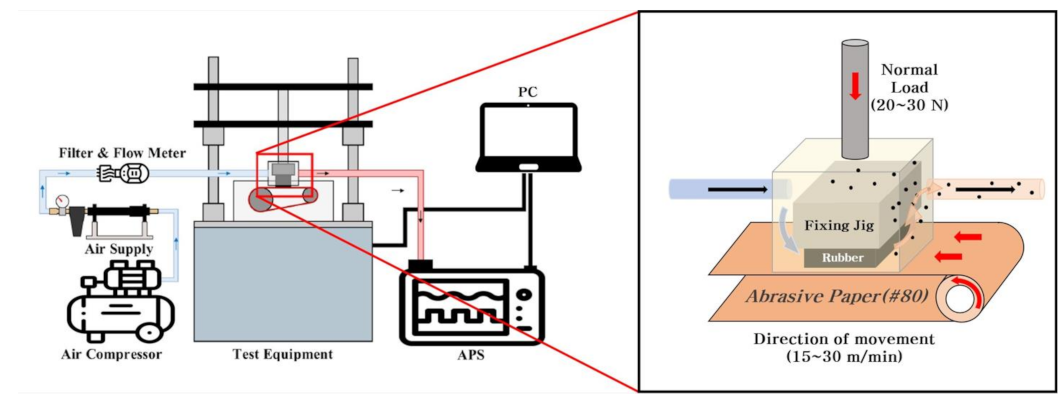
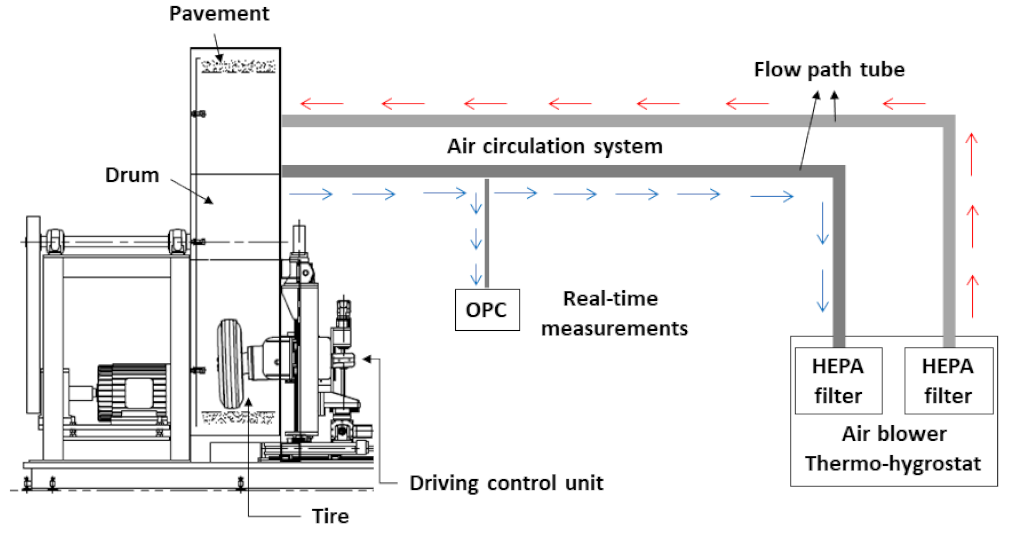

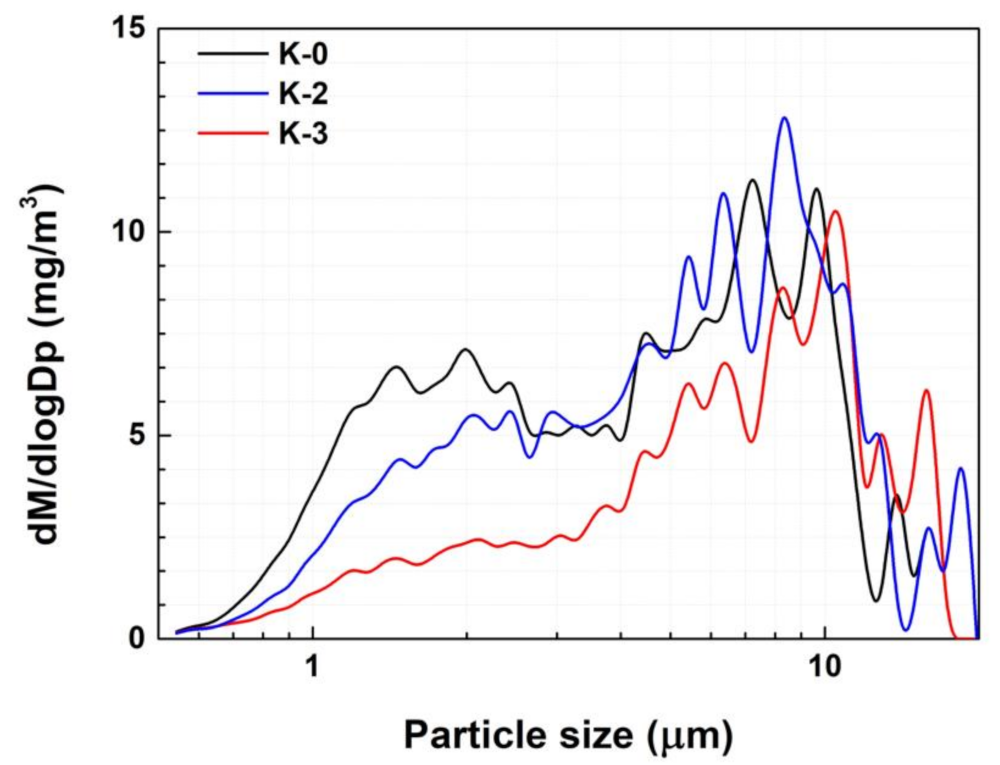

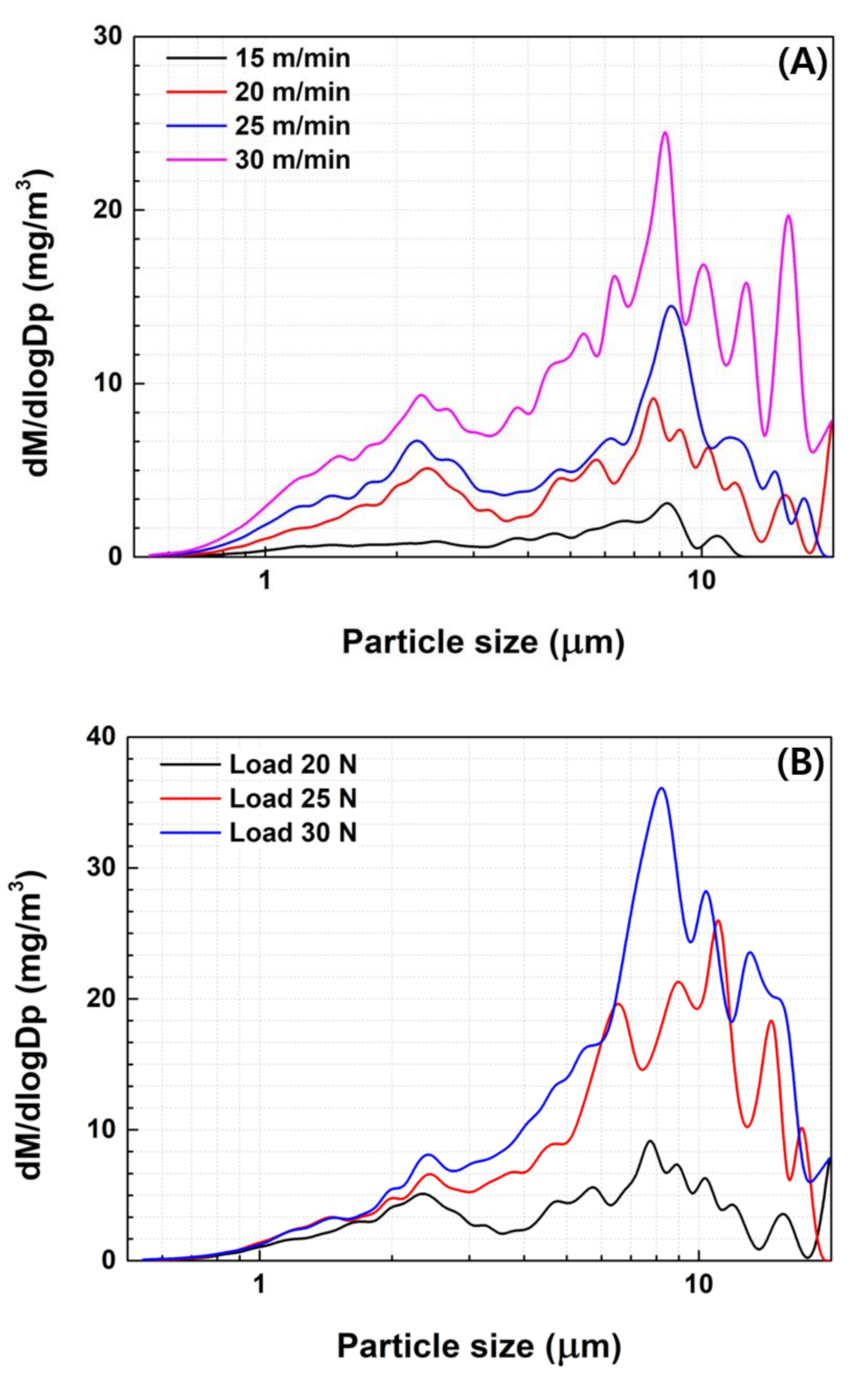
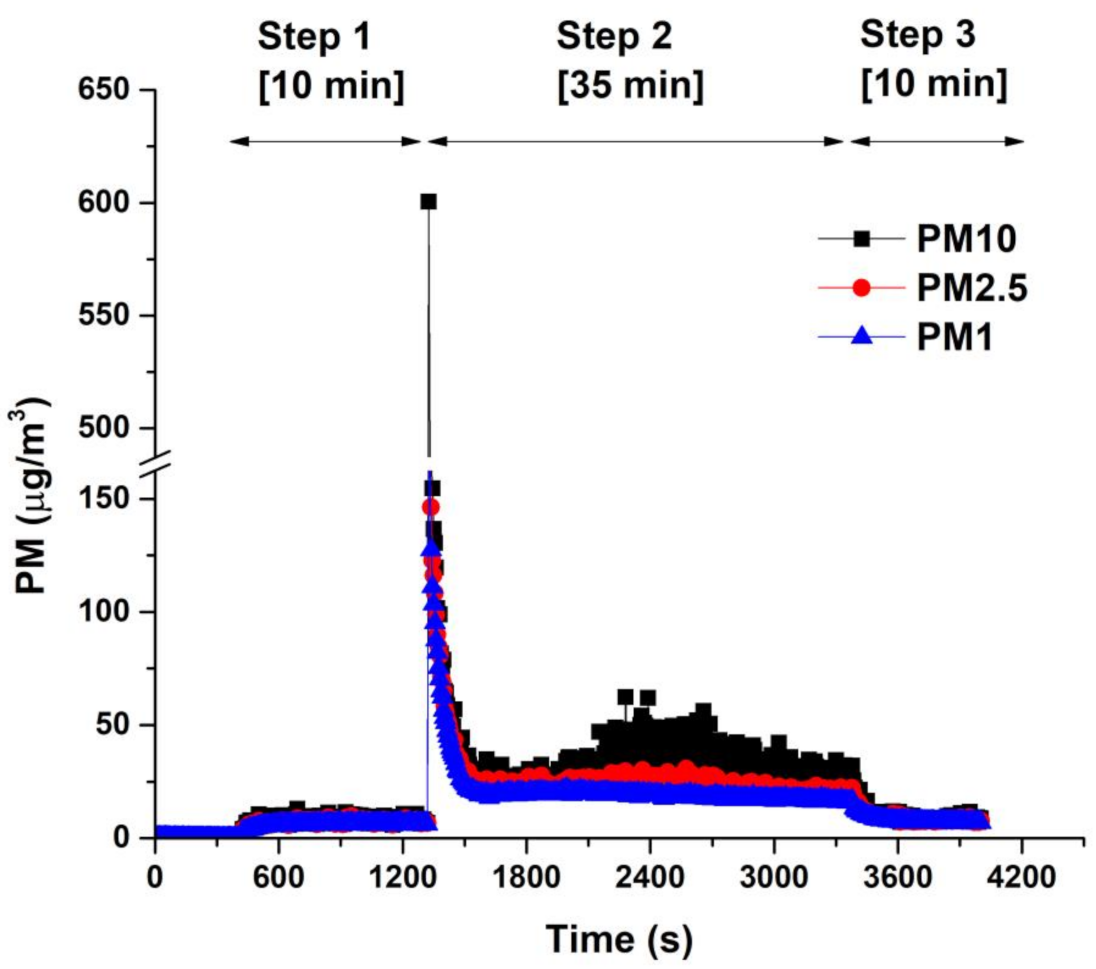

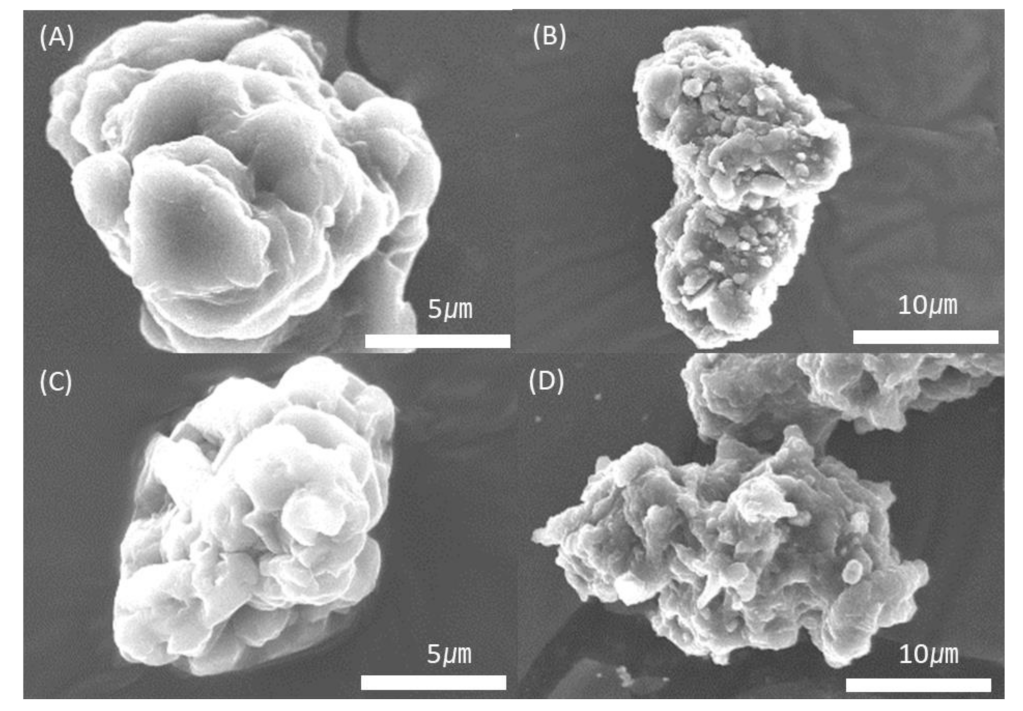

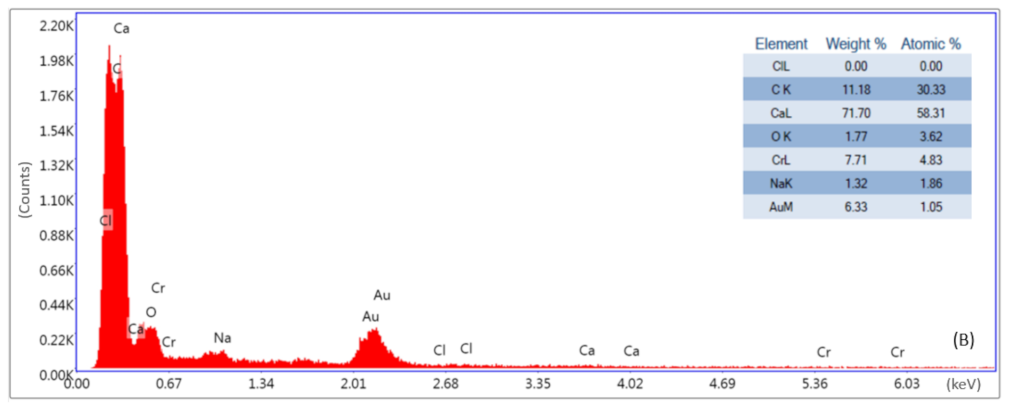
| Property | N234 | OCI-1 | OCI-2 | |
|---|---|---|---|---|
| IA (iodine adsorption) | mg/g | 119 | 143 | 139 |
| N2SA (nitrogen surface area) | m2/g | 115 | 138 | 144 |
| OAN (oil absorption number) | cc/100 g | 125 | 118 | 131 |
| Tint (ITRB *) | % | 123 | 136 | 129 |
| Material | K-0 (Ref) | K-1 | K-2 | K-3 | K-4 | K-5 |
|---|---|---|---|---|---|---|
| NR a | 100 | 70 | 100 | 100 | - | 70 |
| NdBR60 | - | 30 | - | - | 100 | 30 |
| CB (N234) | 55 | 55 | - | - | 55 | - |
| CB (OCI-1) | - | - | 55 | - | - | - |
| CB (OCI-2) | - | - | - | 55 | - | 55 |
| Common formulations | TDAE oil b (5), ZnO (4), St/A (3), 6PPD (2), TMQ (1), Sulfur (1.3), TBBS (1), PVI (0.3) | |||||
| Bound rubber contents (%) | 34.5 | 35.6 | 37.1 | 39.2 | 14.6 | 36.9 |
| Crosslink density (10−5 mol/g) | 8.14 | 8.71 | 8.08 | 8.28 | 9.01 | 9.61 |
| DIN abrasion loss (mg) | 91.3 | 43.8 | 88.3 | 86.7 | 5.8 | 34.5 |
| Tan δ at 0 °C | 0.181 | 0.161 | 0.168 | 0.170 | 0.121 | 0.155 |
| Tan δ at 60 °C | 0.122 | 0.109 | 0.116 | 0.113 | 0.114 | 0.107 |
| Step | Time (min:s) | Action |
|---|---|---|
| First Stage | 0:00–1:30 | NR or BR mastication (initial temperature: 100 °C) |
| 1:30–2:30 | Add 50 wt% of CB and 50 wt% of oil | |
| 2:30–3:30 | Remaining CB and oil were added. | |
| 3:30 | Add St/A, ZnO, 6PPD, and TMQ | |
| 3:30–5:30 | Extra mixing and dump (dump temperature: 150–155 °C) | |
| Second Stage | 0:00–0:30 | Master batch from first stage (initial temperature: 60 °C) |
| 0:30–2:30 | Curatives and dump (dump temperature: 80–90 °C) |
| Test Stage | Driving Conditions |
|---|---|
| Step 1. 60 km/h tire rotation without pavement contact, 15 min Step 2. 60 km/h tire rotation with pavement contact, 35 min Step 3. 60 km/h tire rotation without pavement contact, 10 min | Speed: 60 km/h Vertical load: 4900 N Slip angle 1.5° |
| Size | K-0 1st Run | K-0 2nd Run | K-0 3rd Run | Ave | K-5 1st Run | K-5 2nd Run | K-5 3rd Run | Ave |
|---|---|---|---|---|---|---|---|---|
| PM10 (μg/m3) | 77.7 | 72.5 | 68.5 | 72.9 | 26.4 | 30.4 | 34 | 30.3 |
| PM2.5 (μg/m3) | 42.1 | 44 | 40.8 | 42.3 | 21.6 | 24.3 | 25.7 | 23.8 |
| PM2.5/PM10 | 0.54 | 0.61 | 0.60 | 0.58 | 0.82 | 0.80 | 0.76 | 0.79 |
| Amount of wear (kg) | 0.22 | 0.2 | 0.2 | 0.21 | 0.14 | 0.16 | 0.16 | 0.15 |
Disclaimer/Publisher’s Note: The statements, opinions and data contained in all publications are solely those of the individual author(s) and contributor(s) and not of MDPI and/or the editor(s). MDPI and/or the editor(s) disclaim responsibility for any injury to people or property resulting from any ideas, methods, instructions or products referred to in the content. |
© 2023 by the authors. Licensee MDPI, Basel, Switzerland. This article is an open access article distributed under the terms and conditions of the Creative Commons Attribution (CC BY) license (https://creativecommons.org/licenses/by/4.0/).
Share and Cite
Ha, J.U.; Bae, S.H.; Choi, Y.J.; Lee, P.-C.; Jeoung, S.K.; Song, S.; Choi, C.; Lee, J.S.; Kim, J.; Han, I.S. Control of Tire Wear Particulate Matter through Tire Tread Prescription. Polymers 2023, 15, 2795. https://doi.org/10.3390/polym15132795
Ha JU, Bae SH, Choi YJ, Lee P-C, Jeoung SK, Song S, Choi C, Lee JS, Kim J, Han IS. Control of Tire Wear Particulate Matter through Tire Tread Prescription. Polymers. 2023; 15(13):2795. https://doi.org/10.3390/polym15132795
Chicago/Turabian StyleHa, Jin U., Seok H. Bae, Yu J. Choi, Pyoung-Chan Lee, Sun K. Jeoung, Sanghoon Song, Choong Choi, Jae S. Lee, Jaeyun Kim, and In S. Han. 2023. "Control of Tire Wear Particulate Matter through Tire Tread Prescription" Polymers 15, no. 13: 2795. https://doi.org/10.3390/polym15132795
APA StyleHa, J. U., Bae, S. H., Choi, Y. J., Lee, P.-C., Jeoung, S. K., Song, S., Choi, C., Lee, J. S., Kim, J., & Han, I. S. (2023). Control of Tire Wear Particulate Matter through Tire Tread Prescription. Polymers, 15(13), 2795. https://doi.org/10.3390/polym15132795






